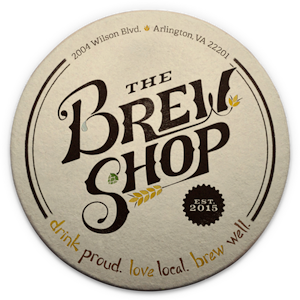Columbus Brew Company's Big Brew Day - Introducing our Fraternal Twin Brews
If you’ve been following the blog (of course you have – you’ve read every post!) then you know that we scored some wort from Columbus Brewing Company on Big Brew Day during our Midwest Road Trip. What does this mean? Well, a quick brewing intro is probably in order. And when I say quick, I mean very quick, a bit over-simplified, and absolutely non-technical.
Piping hot wort directly off CBC's line
Beer is made of four basic ingredients: grain, hops, water, and yeast. To start, you grind up your grains, get them into some hot water (temperature is typically between 148 and 158 degrees) and let them sit in the hot water for some time, usually 60-90 minutes. This process is called “mashing”. At the end of your mash, you remove the liquid from the grains and are left with what is called “wort”. You then boil the wort, adding hops at various intervals during your boil, which is again usually 60-90 minutes long. From there you cool the wort, add some yeast (called “pitching” the yeast), and wait. The yeast makes the bubbles and the giggles (carbonation and alcohol), as they say, converting your wort into beer.
So what the heck did we get from CBC? We got liquid wort that had been through the mashing process but had not yet been boiled. This means it was up to us to come up with a hop schedule and choose a yeast for finishing this beer. We got about 3 gallons of wort in total so we decided to divide it into two batches and make just one small change in the hop schedules of the two batches, so we could taste the effect of the different hops. Since these two beers were from the same wort, and we knew they would end up being very alike, we decided to call this our fraternal twins brew. And who are the most famous fraternal twins we could think of? The Olsen twins, of course! Hence, Mary Kate and Ashley, the beers, were born.
Our twins boiling away
Our first challenge was to come up with the recipe. Luckily, CBC provided an approximation of what the grain bill was for the wort AND told us that it’s the recipe they use to make their very own CBC Pale Ale.
The specs for CBC's pale ale wort
Knowing the CBC Pale Ale (delicious, big, and on the dank side of hops) we knew this was a big beer that we could essentially treat as an IPA when it came to choosing our hops. This was great, because it meant we could go big on hops – a thing Julie particularly enjoys. It was a natural step to decide to use Columbus hops, so we loaded up on Columbus additions for bittering, flavor and aroma. But to keep things interesting, we decided to divide our recipe into two batches so that we could switch up one other hop used for flavor and aroma – a Rakau versus Centennial duel! (Warning: beer nerdery / details below)
For the Mary Kate, we used: 0.15oz Columbus @60 min, 0.1oz Columbus and 0.1oz New Zealand Rakau @10 minutes, 0.1oz Columbus and 0.1oz New Zealand Rakau @2 minutes. (Yes, those hop quantities are right – welcome to one gallon brewing!) Original Gravity came in at 1.060.
For the Ashley, we used: 0.15oz Columbus @60 min, 0.1oz Columbus and 0.1oz Centennial @10 minutes, 0.1oz Columbus and 0.1oz Centennial @2 minutes. Original gravity came in at 1.058.
As you can see, it was “go big or go home” on the hops, since our Columbus hops were over 15% alpha acid and Rakau and Centennial were both around 10%. We used half a packet of Safale US-05 for each brew and tucked these ladies in to ferment in the basement. A week in primary and two weeks in secondary, and bottling day was upon us. Both beers smelled great on bottling day and had fermented down nicely. Mary Kate’s Final Gravity clocked in at 1.009 and Ashley’s at 1.010.
The twins ready to ferement away
Two weeks later it was time for the taste test. We looped the husbands in on this one – being homebrewers themselves, they were interested in how these brews would turn out, even if they shook their heads at the beer names.
Now those are some pretty labels...
It was very hard to distinguish between the two beers on smell. The taste difference, though pretty subtle, was certainly there. The Mary Kate came out a bit softer in the finish, smoother and just a touch fruitier. The Ashley had punch and had that sort of in-your-face bitterness the four C’s often give. (‘Merica!) Both beers were very well balanced, and we were glad we paired big hops with this grain bill. Turns out, we are a group that likes our brews bitter, because we voted 3-1 for Ashley. All in all it was a cool experiment and an awesome opportunity provided by CBC. We look forward to next year’s Big Brew Day!
